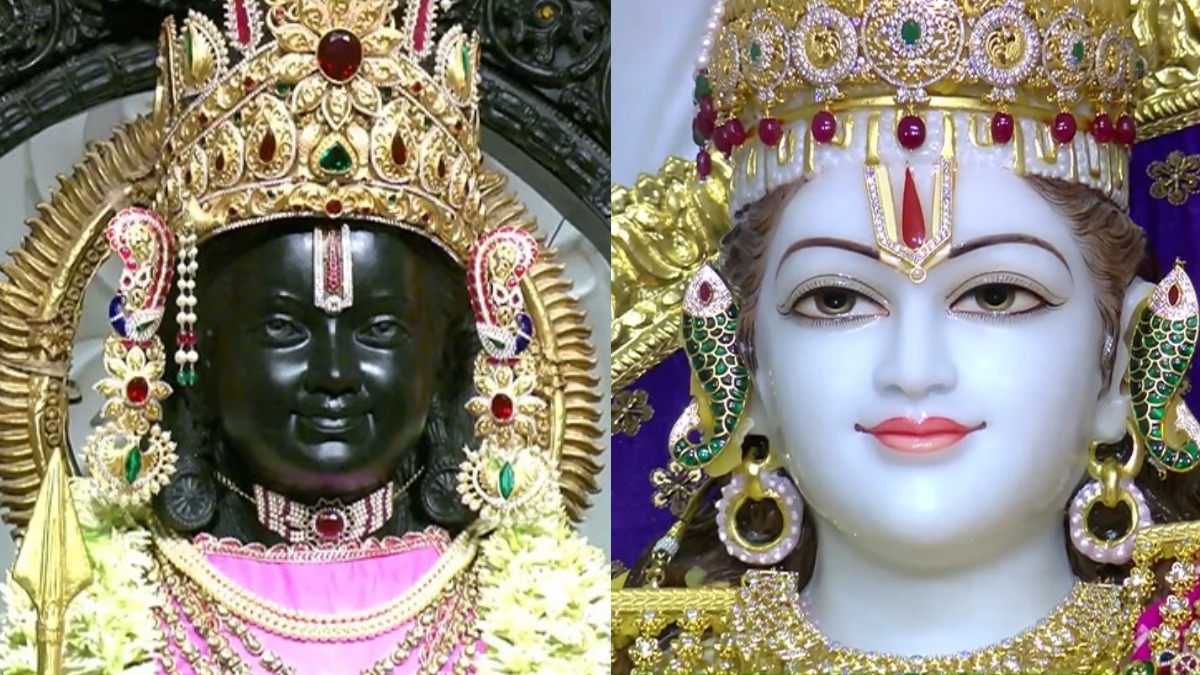The pending rituals of the Ayodhya Ram temple following its completion, and consecration of the other temple complexes in the perimeter, took place with grand ceremonies on Wednesday and Thursday. On this occasion, Nripendra Misra, chairman of Ram Janmabhoomi Tirtha Kshetra Nirman Samiti -- the organisation tasked with building the temple - and the officer architect of the temple, gave NDTV an exclusive tour of the Sapta Mandal of the temple complex, explaining the structures, the deities in them and their significance in the Hindu pantheon.
On Wednesday, the seven temples including the Ram Darbar, were consecrated. The Ram Darbar is located on the first floor of the main temple, where the idol of Raja Ram has now been installed.

On 22 January last year, the idol of Ram Lalla - loctaed in the ground floor -- was anointed in the presence of Prime Minister Narendra Modi. Today, the consecration of the Raja Ram idol - along with Sita, Laxman, Bharat, Shatrughan and Hanuman -- took place amid Vedic chants.
The second floor of the main temple has also been completed. But the Trust has decided that no idol is to be installed in it - at least for now. "The floor will house rare manuscripts of Ramayana," Mr Misra said.
Mr Misra told NDTV that around 4.5 lakh cubic feet of red stone from Bansi hill of Rajasthan has been used to build the entire temple.
After the Ram Darbar was installed on the first floor, the golden peaks of the temple was completed.
Golden Peaks Of Five Pavilions
Mr Misra said the temple has five pavilions, all crowned with golden peaks which are now completed. The main peak stands at a dizzying 161 feet - equal to a building with 15 floors. Below it stands the sanctum sanctorum where the idol of Ramlala stands.
The temple is now completed, he told NDTV. Only some details of cleaning and polishing are left, which are being done by machines.

The rampart has twice as many stones as the temple.
Mr Misra said the five mandaps of the temple are now open to the public.
The main temple has a 1-km rampart, which also works as a walkway to circumambulate the complex and connects the six other temples. 8.5 lakh cubic stones have been used in the rampart -- double the amount tone used in the main temple. The Parikrama Marg, he said, will be completed by September.
Along with that, departments handling the temple security, control room, donation room, prasad and office that are in the basement of the rampart, will be completed.
Initial plans for the temple were modest
What stands at the Sapta Mandap today, was conceived in a very scale initially, Mr Misra said. "No one had any idea that the Supreme Court would give 71 acres and the public would contribute 100 per cent for the temple. The government has not spent a single penny in this. All the contribution has been made by our countrymen from home and abroad. This money has been used for construction and it was not estimated that so much money would come and we got ambitious and the plans expanded," he said.

The rampart was a later addition
Mr Misra said the idea of building a rampart connecting all seven structures also came later -- "after the end of Covid in 2023". He said after learning that in Rajasthan and Maharashtra, big temples have ramparts, they decided to emulate the system here.
A Message Of Social Harmony
Mr Misra said once Prime Minister Narendra Modi was reviewing the construction of the temple, he said Lord Ram had two forms - as God himself and as "Maryada Purushottam".
Lord Ram was "Maryada Purushottam" because he maintained social harmony in his kingdom in his lifetime since childhood, associating with every class of people . "If you build temples of those associated with the life of Lord Ram, then today's generation will know how he maintained social harmony and did so since childhood," Mr Misra said, quoting the Prime Minister.
Sacred Lake
The temple premises also has a sacred lake, around which people can come and meditate, Mr Misra said. The lake is considered holy and it is extremely important under Vaastu. The water in it remains fresh through a plant that has installed near it.
Track Latest News Live on NDTV.com and get news updates from India and around the world

